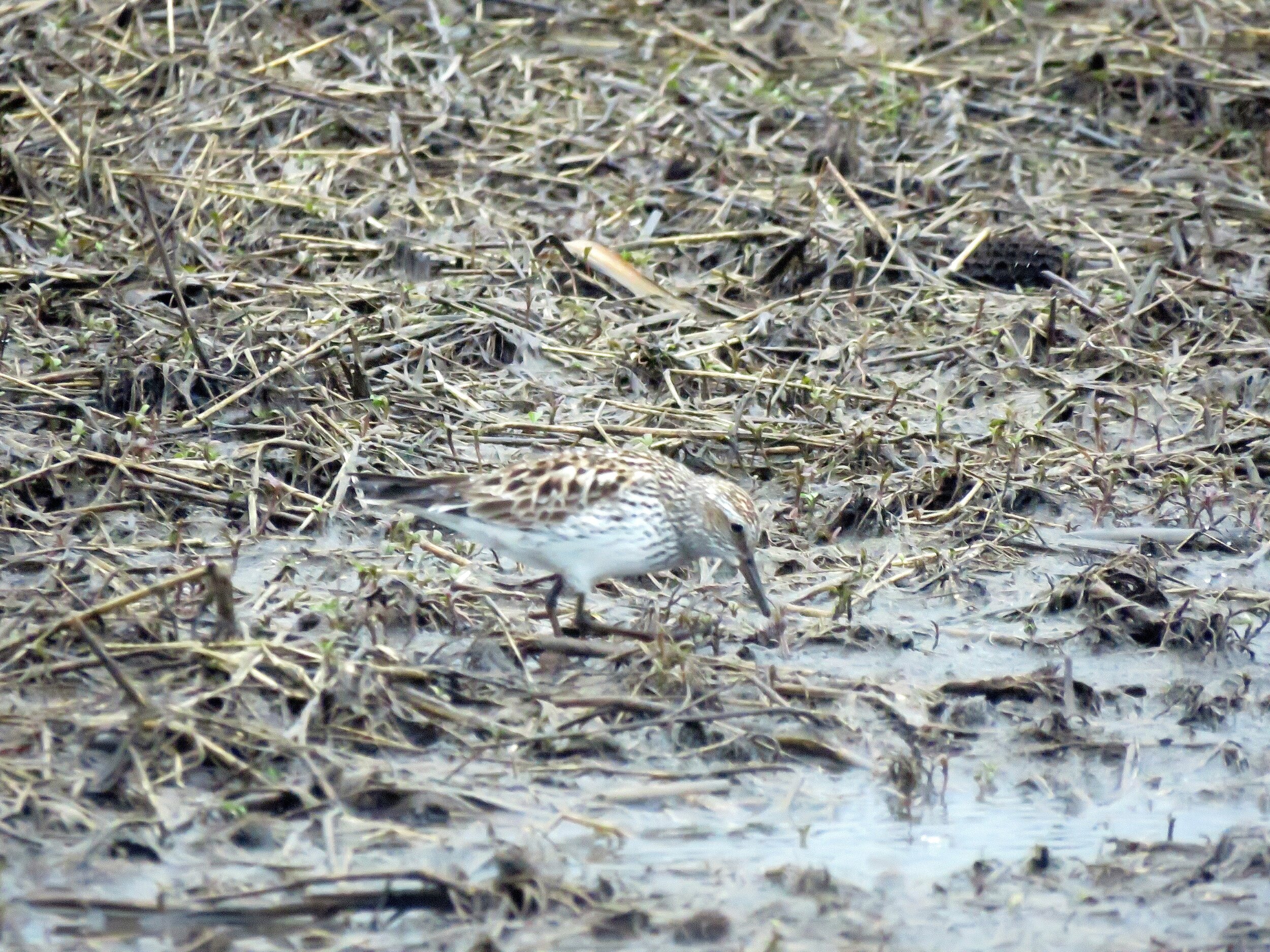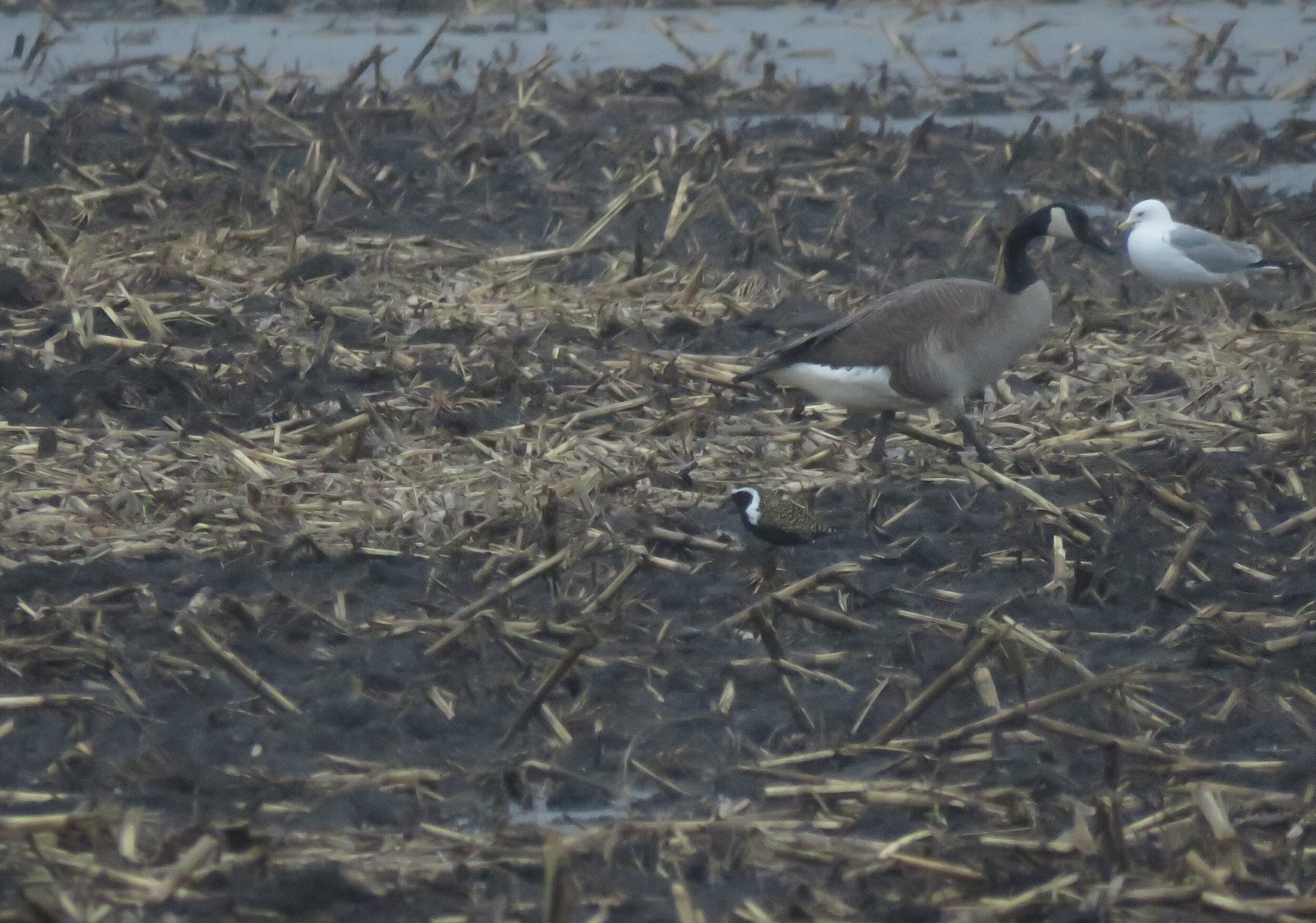Banner collage photo of American Golden Plover by Mary D’Agostino, other images by Isoo O’Brien
When most people think about birding in Chicago, the lakefront is without a doubt the first place that comes to mind. A well-known favorite is Montrose Point, a 15-acre promontory that juts into Lake Michigan lush with native plantings, marshland, dunes and a protected shoreline. It’s this diversity of ecosystems that makes it such an attractive landing spot for migrating birds. Each May, hundreds of birders flock to the sanctuary to experience avian diversity at its finest. A single visit can yield upwards of 80 different species. Few things can compare to a perfect morning at Montrose.
But this year was like no other. With the pandemic bearing down on the city, in an effort to deter congregation and limit the spread of COVID-19, Mayor Lightfoot promptly shuttered the entire Chicago lakefront and Cook County's forest preserves also limited access. With a Cook County big year already in the works, I had to identify alternate areas in which to find my birds.
But how much room was really left for creativity? Cook County had for decades been established as one of the most heavily birded areas in the country. It’s not uncommon to see a long row of cars pulled-off along the side of the road, and then a gaggle of birders standing shoulder-to-shoulder, peering into scopes and marveling at the sight of a rarity. In our tight-knit community of birders, word traveled fast. Any areas with real potential had long been publicized, pin-dropped, and popularized by the birding community, right? My general strategy: a purist’s approach. If I couldn’t rely on the usual suspects, I’d have to filter out the cacophony and let the landscape tell me where to go.


Ridgeland Ave Fluddle
With the lakefront closed, I knew my single greatest hurdle would be finding shorebirds. With the exception of the Lake Michigan shoreline, Cook County is completely devoid of the low water habitat favorable for wading birds. If I couldn't access the shoreline, I’d have to search out the potential for mudflats. Beginning in April, I utilized the satellite view on Google maps to explore the remote agricultural areas of far southern Cook County. I drove past thousands of acres of cornfields, scouting the area for dips in the terrain. By the time May rolled around, I had mapped out four fields that I felt certain would suit shorebirds after a downpour. I maniacally watched the weather. Luckily, this spring was particularly wet, and my plan worked perfectly. It was no Chautauqua or Emiquon, but situated on the outskirts of Richton Park a half block north of the Will County line, the fields along Ridgeland Avenue between Steger and Sauk Trail provided some awesome shorebird habitat! These fields have a natural dip towards their middle making them particularly prone to flooding (sometimes they actually flooded so much that the water was too deep for shorebirds). With a collective effort, birders recorded 15 species of shorebirds here last May including Long Billed Dowitcher, two American Golden Plovers, three Black Bellied Plovers, and three White Rumped Sandpipers! The consistency of flooding sprouted a small marsh, attracting Sora and Virginia Rails during migration along with breeding Marsh Wren and Swamp Sparrow. You can also find singing Dickcissels and Horned Larks along the road in the summertime. During the winter months, thousands of geese will occasionally congregate in these fields; if you're lucky, you may also run into flocks of Lapland Longspurs and Snow Buntings. These fields may not look like anything special, but they offer a rare taste of rural birding in one of the most urban areas of Illinois.
Because the fields are privately owned farmland, all birding has to be done from the road. Fortunately, there's plenty of room to pull off, and also a parking lot nearby if you don’t mind a little walk. Many of the birds are distant so it helps to have a scope if you plan on visiting this location. Ridgeland is also a seasonal birding hotspot because it is an active cornfield during fall shorebird migration.
Helmick Nature Preserve
Just 3 blocks northwest of the fluddle lies Helmick Nature Preserve, a mile-long stretch of wetlands and scrubby woodland along the Old Plank Road trail. Once again, variety of habitat = diversity of birdlife. From warblers to waterfowl, Helmick offers them all. In 2020, I recorded nearly 150 species at this site alone. Although it can be exciting at all times of year, Helmick is best during migration season. This preserve offers yet another unique take on rural birding; with so much of the surrounding landscape razed for agriculture, habitat for migrating birds is limited and only the occasional, broken shrubland bisecting the fields remain. As a result, Helmick acts as a natural migrant trap, serving as an oasis for birds in an agricultural "habitat desert."
Parking can be found at Central and Miller Circle Drive, a few yards north of where the trailhead begins. Upon entering from Central Avenue, there's a small wooded area that's great for migrating passerines such as warblers, flycatchers, thrushes, vireos and more. Migrants particularly like this area for its water feature: two vernal pools on each side of the trail that serve as a place to feed, cool off and take a drink. This is also an excellent place to spot Rusty Blackbirds during the early spring months, (I had them here five times during April!) and a local pair of Carolina Wrens that bred in these woods last summer. This wooded area opens to a scrubby prairie with a host of native plantings. During summer and migration seasons this section of the preserve hosts a variety of uncommon breeding birds including Sedge Wren, Bobolink, Yellow Breasted Chat, Yellow Billed Cuckoo and Blue Grosbeak.
But the most exciting aspect about Helmick is undoubtedly the wetland area. In the last year, 21 species of waterfowl and 17 species of shorebirds were recorded at this site, including rarities like Black Bellied Whistling Duck and Buff Breasted Sandpiper! August and early September, the peak of shorebird migration, is a particularly exciting time to visit. A good day at Helmick can net a dozen shorebird species, something seldom achieved in the Chicago area. Amongst the regulars, Helmick is a reliable location for Stilt Sandpiper, a rare migrant typically only seen in Cook County a few times each year. Going into my big year, I expected that they would be a challenge to locate, but I tallied over 30 Stilt Sandpipers at Helmick last fall! If you want to look for rare shorebirds, this is your place.
Along with the height of shorebird migration, late summer brings a great deal of other wading birds. August is the peak of "post breeding dispersal," a period when birds wander from their breeding sites before migrating back south. During this time, numerous species of herons and ducks, hundreds of Mallards and an impressive flock of cormorants use the island in the center of the lake as a roosting site. When visiting Helmick, it helps to have a scope, but is not necessary for an enjoyable birding experience.
Despite our vast and knowledgeable birding community, we often revisit the same locations, flocking together at the same destinations much like the birds we seek to uncover. For all of the ways the pandemic has forced us to curb our behavior and reevaluate our perspectives, for me, it was a gentle reminder to revisit the basics of birding: to look to the land and to respect its changing landscape. Big year or not, the greatest thing about birding is that you can find birds anywhere, and in a place like Cook County, there is still so much left to be discovered.
isoo o’brien
is an Evanston native and a senior at Evanston Township High School. An avid birder since age 9, Isoo is a volunteer field trip leader for local clubs across the Chicago area. He currently holds the Cook County big year record at 288 species.
Photo by Youngrae Kim / Chicago Tribune




